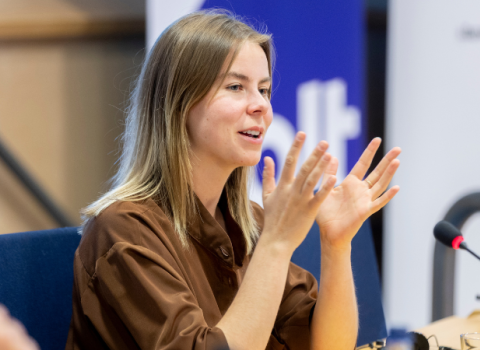Oxford Photovoltaics, a company recently spun out from the University of Oxford by Isis Innovation Ltd., has developed new solar cell technology that is manufactured from cheap, abundant, non-toxic and non-corrosive materials and can be scaled to any volume.
Harnessing the sun’s energy, the solar cells are printed onto glass or other surfaces, are available in a range of colours and could be ideal for new buildings where solar cells are incorporated into glazing panels and walls.
Isis Innovation is Oxford’s technology transfer company, responsible for creating new technology companies based upon Oxford research. For Oxford PV, Isis protected and managed the underlying intellectual property, developed the initial business plan, and built the team that is now taking the company forward. By combining earlier research on artificial photosynthetic electrochemical solar cells and semiconducting plastics Oxford PV can now create manufacturable solid-state dye sensitized solar cells.
The device is a form of thin film solar technology, a relatively new development in solar energy generation.
Leading thin film technologies are currently hampered by the scarcity of minerals used. Other dye-sensitized solar cells are being held back by the volatile nature of liquid electrolytes.
Oxford PV’s technology replaces the liquid electrolyte with a solid organic semiconductor, enabling entire solar modules to be screen printed onto glass or other surfaces.
Green is the most efficient "semi-transparent" colour for producing electricity, although red and purple also work well.
The materials used are plentiful, environmentally benign and very low cost.
Oxford PV predicts that manufacturing costs of its product will be around 50% less than the current lowest-cost thin film technology and expects its new mechanism will eventually match the unsubsidised cost of electricity generated from fossil fuels.
The technology could revolutionise the incorporation of photovoltaic materials into windows and walls and other parts of buildings. CEO Kevin Arthur said: ‘This technology is a breakthrough in this area. We’re working closely with major companies in the sector to demonstrate that we can achieve their expectations on economic and product lifetime criteria.’
The technology was developed by Dr Henry Snaith, of Oxford University’s Department of Physics, who said, 'One of the great advantages is that we can process it over large areas very easily. You don’t have to worry about extensive sealing and encapsulation, which is an issue for the electrolyte dye cell.'
Tom Hockaday, MD of Isis Innovation, said, "Oxford Photovoltaics is another good example of Isis' commitment towards creating new business opportunities in the sustainable energy sector. We are delighted to have worked with this dynamic and exciting team in driving Oxford PV business to this stage and I wish them continued success in the future"




 A unique international forum for public research organisations and companies to connect their external engagement with strategic interests around their R&D system.
A unique international forum for public research organisations and companies to connect their external engagement with strategic interests around their R&D system.